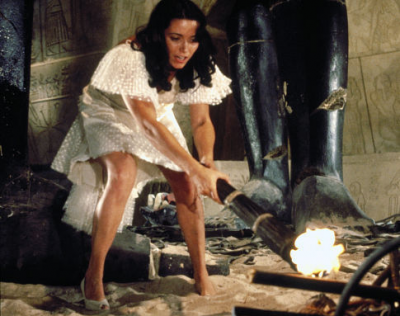How to Integrate Vista Updates This guide shows you how to integrate Vista updates to the installation source, which is install.wim. Much of the credit for this guide goes to FireGeier. His site contains a lot of useful visual guides for automating Vista installations. It is found here: FireGeier's Unattended Vista Guide. Although others have used peimg.exe, official documentation from Microsoft's WAIK is lacking. Therefore, methods described here use Package Manager. The only place peimg.exe is used in this guide is to create a text file that lists the packages that were integrated. Requirements WAIK tools (imagex.exe, pkgmgr.exe, and supporting files); you should leave these files in the install folder (%programfiles%\Windows AIK\) and not copy them to another location. Run them from their original location so all dll's that are necessary are there. Vista DVD ISO extractor Although Windows XP is not required and you can do this in Vista, I had trouble mounting images in Vista. Therefore, I was working in Windows XP. Preparation Create a folder called 'Vista_Work'. You can call it anything you want. I have assigned it a variable %vpath% in my script so I'll refer to it as %vpath% from now on. Create folders in %vpath% called Mount, Sandbox, Updates, and Current_ISO. I've assigned them the variables %vmount%, %vsandbox%, and %vupdates%, respectively. Procedure Boot to the OS that has WAIK installed. If you installed it in Vista, you'll need to run these scripts in elevated mode. Extract install.wim from Vista installation DVD to %vpath%. Create script file called set_variables.cmd, integrate.cmd and expand.cmd in %vpath% from the following code or download them from the links: The script set_variables.cmd allows you to skip editing the scripts with your working folders path (%vpath%). They are automatically assigned based on the current working folder. You may have to change the tokens value in expand.cmd, if you are not using the English version. Change tokens=5 to tokens=4 if that's the case. If you are unsure, leave it and continue, as no damage is done. Only your Integrate.xml will not be properly formed. You'll determine if it is improperly formed in a later step. Downloads: set_variables.rarExpand.rarIntegrate.rar set_variables.com :: As long as all your folders are within one folder, you shouldn't have to change :: these paths since this batch file will assign the paths based on where :: set_variables.cmd is located. This script is called by expand.cmd & integrate.cmd :: Also, the Windows AIK folders are added to the path so you can run imagex, expand, :: and pkgmgr without pointing to those paths. @echo off CD /d %~dp0 SET vpath=%CD% SET vmount=%vpath%\Mount SET vupdates=%vpath%\Updates SET vsandbox=%vpath%\Sandbox SET path=%path%;C:\Program Files\Windows AIK\Tools\x86;C:\Program Files\Windows AIK\Tools\Servicing expand.cmd (courtesy of FireGeier) @echo off TITLE Vista Updates Expansion Process echo. :: As long as you are this script, integrate.cmd and expand.cmd are in the :: same folder, you will not have ot change your paths. CD /d %~dp0 call set_variables.cmd echo. echo Your vpath is %vpath%. If this is correct, continue. echo. pause :: Create an temporary to store expanded cab and xml files from msu files. IF NOT EXIST "%vupdates%\Temp" (MKDIR "%VUpdates%\Temp") DEL "%vupdates%\Temp\*.*" /q PUSHD "%vupdates%" FOR %%i IN (*) DO (Call :Extract %%i) :: Check for older file versions created by this batch and delete if exists. IF EXIST "%vupdates%\Temp\Integrate.xml" DEL /Q "%vupdates%\Temp\Integrate.xml" IF EXIST "%vupdates%\Temp\Sort.txt" DEL /Q "%vupdates%\Temp\Sort.txt" :: Create the first 3 lines of Integrate.xml ECHO ^<^?xml version="1.0" encoding="utf-8"?^>^ >>%VUpdates%\Temp\Integrate.xml ECHO ^<^unattend xmlns="urn:schemas-microsoft-com:unattend"^>^ >>%VUpdates%\Temp\Integrate.xml ECHO ^<^servicing^>^ >>%VUpdates%\Temp\Integrate.xml :: Create sort.txt which is necessary for compiling Integrate.xml. PUSHD "%vupdates%\Temp" del *.txt del WSUSSCAN.cab Dir /OD > Sort.txt For /F "Tokens=5" %%i IN ('FINDSTR ".cab" Sort.txt') DO Call :WriteXML %%i :: Create the last two lines of Integrate.xml. ECHO ^<^/servicing^>^ >>%VUpdates%\Temp\Integrate.xml ECHO ^<^/unattend^>^ >>%VUpdates%\Temp\Integrate.xml echo. echo Finished extracting MSU's and compiling Integrate.xml. echo Check Integrate.xml to see if it is well-formed before continuing echo to use Integrate.cmd to begin the integration process. echo. pause ::---------------------------------------------------------------------------- :: SUB PROCEDURES & PARTS EXECUTED OPTIONAL ::---------------------------------------------------------------------------- :: Extract subroutine extracts the msu files for the necessary cab and xml files. :Extract START "Expand" /WAIT expand.exe %1 -f:* "%vupdates%\Temp" GOTO :EOF :: WriteXML subroutine writes entries into Integrate.xml, which are specified by the name of :: coresponding cab file. This is the command line, which will call the installation of the :: cab during pkgmgr procedure later. :WriteXML IF "%1"=="WSUSSCAN.cab" Goto :EOF SET Name=%1 IF ".%Name%"=="." GOTO :EOF SET XML=%Name:~0,-4%.xml SET Cab=%Name:~0,-4%.cab ECHO ^<^package action="install"^>^ >>%vupdates%\Temp\Integrate.xml FOR /F "Tokens=*" %%i IN ('FINDSTR "assemblyIdentity" %XML%') DO (Echo %%i >>%vupdates%\Temp\Integrate.xml) ECHO ^<^source location="%vupdates%\Temp\%Cab%" /^>^ >>%VUpdates%\Temp\Integrate.xml ECHO ^<^/package^>^ >>%vupdates%\Temp\Integrate.xml :EOF Integrate.cmd @echo off TITLE Vista Updates Integration Process CD /d %~dp0 call set_variables.cmd echo. echo Your vpath is %vpath%. If this is correct, continue. echo. pause echo. echo Before beginning, please choose the version of Vista you want to update. echo. :SELECT_VER set choice= set /p choice=Choose 1 for Business, 2 for HomeBasic, 3 for HomePremium, or 4 for Ultimate: if not '%choice%'=='' set choice=%choice:~0,1% if '%choice%'=='1' goto BUS if '%choice%'=='2' goto HB if '%choice%'=='3' goto HP if '%choice%'=='4' goto ULT echo. ECHO "%choice%" invalid! Try again... ECHO. GOTO SELECT_VER :BUS SET VERSION=1 SET type=Business GOTO STEP_1 :HB SET VERSION=2 SET type=HomeBasic GOTO STEP_1 :HP SET VERSION=3 SET type=HomePremium GOTO STEP_1 :ULT SET VERSION=4 SET type=Ultimate GOTO STEP_1 :STEP_1 REM MOUNT A READ-WRITE IMAGE OF THE CHOSEN VISTA VERSION imagex.exe /mountrw "%vpath%\install.wim" %VERSION% "%vmount%" ECHO. ECHO Press any key to begin integration of updates. Once you start the process. echo you should not cancel it. Make sure you are ready before continuing. echo. PAUSE echo Starting integration. This can take several minutes. Please wait until it finishes. echo on START "Starting Package Manager" /WAIT pkgmgr.exe /o:"%vmount%;%vmount%\Windows" /n:"%vupdates%\Temp\Integrate.xml" /s:"%vsandbox%" /l:"%vpath%\integrate.txt" echo. echo The errorlevel is: %errorlevel%. echo. echo An errorlevel of 0 indicates successful integration. Press any key to save a echo list of installed packages to a text file. ECHO. pause echo off peimg.exe /list /image="%vmount%\Windows" >> "%vpath%\Current_ISO\updates_installed_%version%_%type%.txt" echo. echo The Sandbox folder should be cleared whether integration was successful or not. echo. pause REM Delete, then recreate the folder rd "%vsandbox%" /s /q mkdir "%vsandbox%" echo. echo Now, we are ready to commit changes and unmount. Selection an option to echo unmount while committing or not committing changes. echo. echo Once you commit, the process can take several minutes as the changes are echo saved to your installation source. ECHO. :SELECT_COMMIT set choice= set /p choice=Choose Y to commit changes. Choose N to abandon changes: if not '%choice%'=='' set choice=%choice:~0,1% if '%choice%'=='Y' goto COMMIT if '%choice%'=='y' goto COMMIT if '%choice%'=='N' goto ABANDON if '%choice%'=='n' goto ABANDON echo. ECHO "%choice%" invalid! Try again... ECHO. GOTO SELECT_COMMIT :COMMIT imagex.exe /unmount /commit "%vmount%" goto END :ABANDON imagex.exe /unmount "%vmount%" goto end :END echo. echo Done. Press any key to exit. echo. Pause Copy all of your MSU updates to the %vupdates% folder. Execute expand.cmd. Expand.cmd will extract the .cab and .xml files from the .msu files in a temporary folder called Temp in %vupdates%. It also compiles a file called Integrate.xml, a necessary file for integration. Note: do not change the spacing in expand.cmd. Some spaces are necessary to build a proper structure for Integrate.xml. [*]Examine this file (Integrate.xml) using Notepad. It should have as many entries as there are updates of the following nature: Integrate.xml sample (partial) <?xml version="1.0" encoding="utf-8"?> <unattend xmlns="urn:schemas-microsoft-com:unattend"> <servicing> <package action="install"> <assemblyIdentity name="Package_for_KB928089" version="6.0.1.1" language="neutral" processorArchitecture="x86" publicKeyToken="xxxxxxxxxxxxxxx"/> <source location="E:\Vista_Work\Updates\Temp\Windows6.0-KB928089-x86.cab" /> </package> ... and so on If your file is bare, you may need to change tokens=5 to tokens=4 in expand.cmd. [*]Execute integrate.cmd once you determine your xml is good. It will prompt you through the steps. Note that if you were successful, you should get an errorlevel of 0. The script will also create a file called Updates_Installed_%#%_%type%.txt, where # and type correspond to the Vista version number (1 to 4) and type (Business, Home Basic, Home Premium, or Ultimate), respectively. This is only for the purpose of auto-generating a text file that shows all the updates. The official way of checking integrated updates is described in step 8. NOTE: You will have to install updates to each version of Vista separately. So, you can repeat integrate.cmd for each version by running integrate.cmd and choosing to mount a different version. NOTE: You don't have to repeat expand.cmd for each version, only integrate.cmd. The script empties the Sandbox folder automatically but does not delete the cab files that are expanded in Temp folder. You can manually delete the cab files later if you prefer. [*]Start WSIM and open your updated install.wim. If you are asked to create a new catalog file as the current one is missing or outdated, go ahead and create a new catalog file. You will see your packages automatically assigned as either hotfixes, updates, or security updates in the directory structure of Packages. NOTE: This is the official method to check whether your packages were installed. We used peimg only to make a text file that does that automatically for step 9. You'll have to create a new catalog file for each version of Vista if you want to update it in your ISO. [*]Inject install.wim back into the ISO if you committed changes to finish the process. You may also inject updates_installed_#_type.txt if you want to know which updates are contained in the ISO image. You can also use Microsoft's utility to rebuild the bootable ISO but that involves extracting ALL the files from the DVD, not just install.wim. Therefore, it's easier to use an ISO utility than Microsoft's utility. Injecting the catalog file is options as it is not used by setup. THX to SPACESURFER

_14e30a.png)
_8126ce.png)

